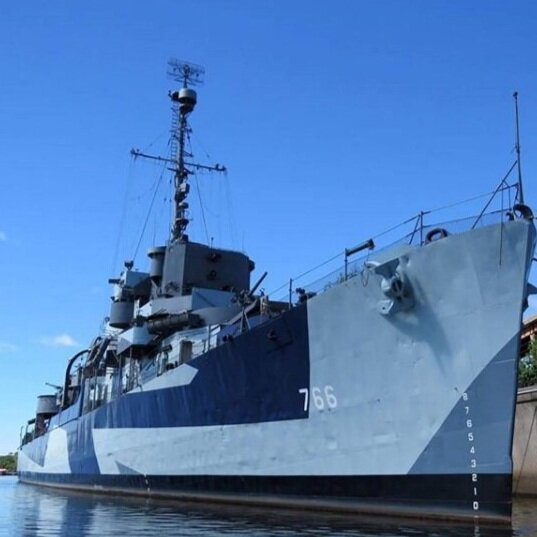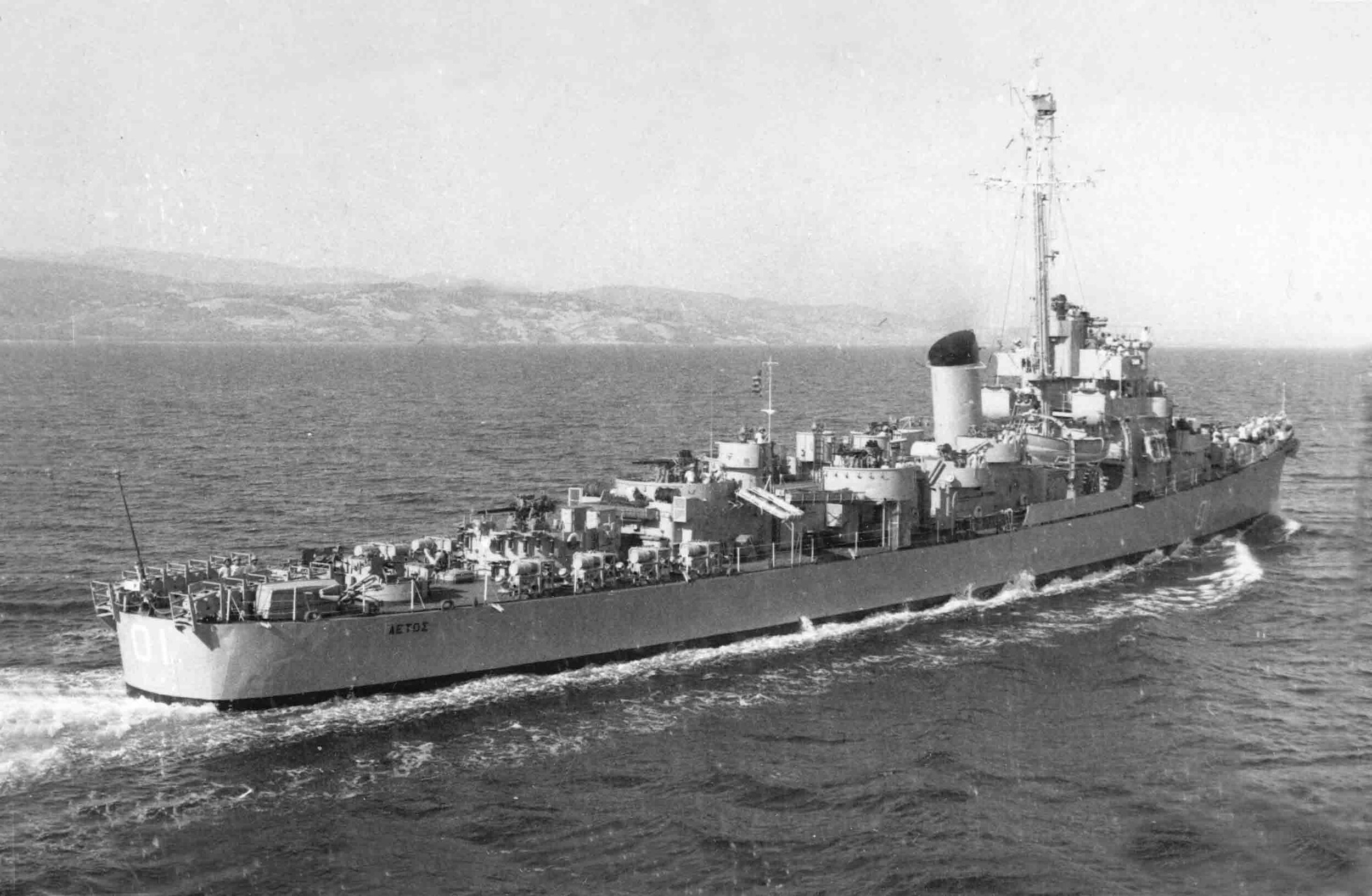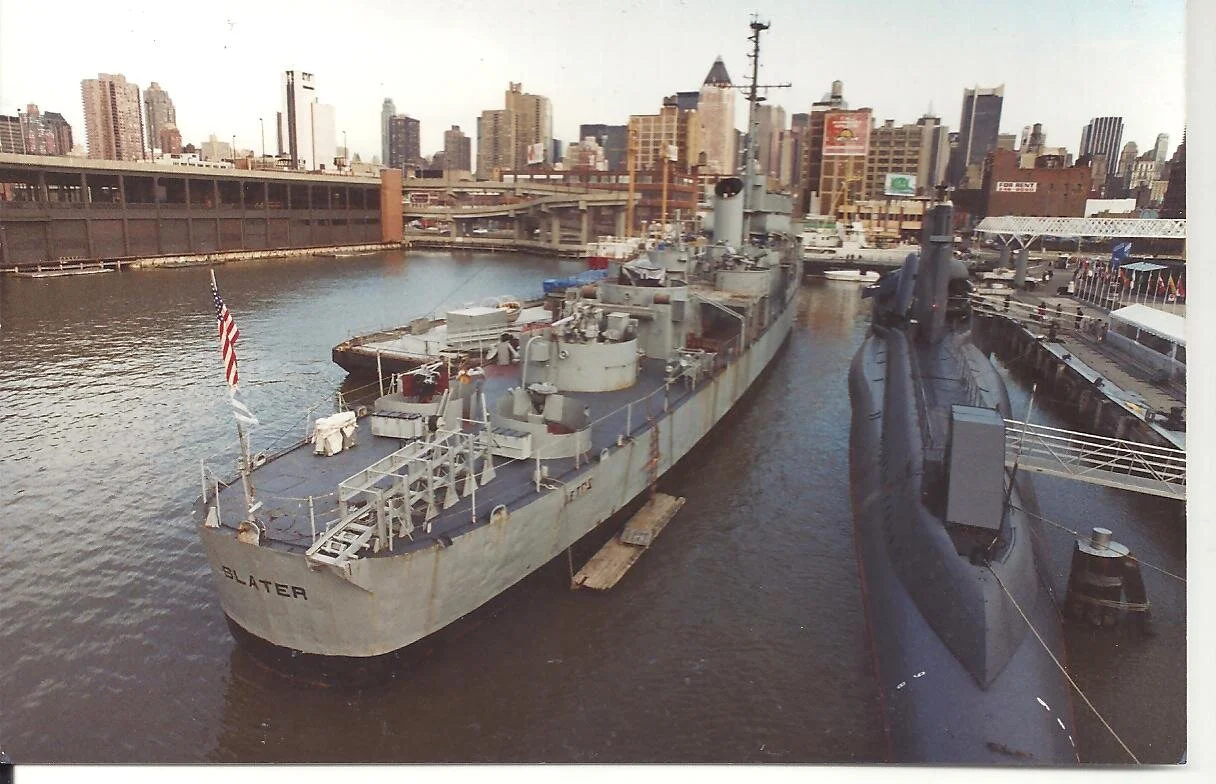History of Destroyer Escorts
Early Allied escort Vessels
America's sudden entry into World War II in December 1941 caught the Navy's anti-submarine forces unprepared. Although the need for a mass-produced anti-submarine warship had been recognized well before the war, construction priorities were given to larger warships and smaller landing craft. Thus, the United States Navy began the war with ships that were more or less inadequate to the technological demands of World War II combat. Read More…
Classes of Destroyer Escorts
The 563 destroyer escorts built during World War II were divided into six classes. Four of the six classes mounted 3"/50 guns, while the last two classes mounted the larger 5"/38 gun. The various destroyer escort classes also mounted different types of propulsion, depending primarily upon what type of engine was available due to the high demands of new construction. Read More…
Modifications of Destroyer Escorts
Destroyer escorts proved to be highly versatile ships, capable of accomplishing a wide variety of missions. This versatility, combined with the abundance of available destroyer escorts due to the vast expansion of American shipbuilding during the war, meant that many destroyer escorts were converted both during and after World War II into two new types of ships: high speed transports (APDs) and radar picket ships (DERs). Although originally designed only as convoy escorts, the modified destroyer escorts soon proved themselves more than capable of filling their new roles. Read More…
Weapons of Destroyer Escorts
Destroyer escorts mounted the latest and most up-to-date anti-submarine weapons and detection gear available during World War II, including depth charges, hedgehogs, air and surface search radar, sonar, and a high frequency radio direction finder known as HF/DF. Destroyer escorts also carried a sophisticated control station for this technology known as the combat information center. The ships mounted hedgehog ahead-thrown depth charges and conventional depth charges for attacking submerged boats, as well as large and small caliber deck guns. All of these technologies are preserved intact aboard the SLATER today. Read More…
Destroyer Escorts in the Atlantic
The Battle of the Atlantic was the longest battle of World War II. It began immediately upon the British declaration of war against Germany in September 1939 and ended with Germany's surrender to the Allies in May 1945. During those six years, thousands of ships were sunk and tens of thousands of men were killed in the Atlantic Ocean. The battle pitted Allied merchant and supply ships, along with their escorts, against German submarines, aircraft, and surface raiders. British Prime Minister Winston Churchill said of the Battle of the Atlantic, "everything elsewhere on land, sea and air, depended ultimately on the outcome of this battle." The outcome of the Battle of the Atlantic depended on the destroyer escort. Read More…
Destroyer Escorts in the Pacific
Destroyer escorts played an equally vital, if less well known, role in the Pacific Theater. The ships escorted American supply convoys over vast distances between Pacific islands. Destroyer escorts conducted anti-submarine sweeps, including one of the most important of the war carried out by the USS ENGLAND DE-635. The ships provided defense for fleets of US warships. Destroyer escorts that had been converted to high speed transports carried out shore bombardments and amphibious assaults. Destroyer escorts also served as radar picket ships during the Okinawa campaign, which was the costliest battle of the Pacific war. Read More…
Surviving Destroyer escorts
Excluding the SLATER, there are currently eight destroyer escorts believed to exist around the world. Two of these ships are preserved as museums, the rest are still in some form of service in foreign fleets. Of the following ships, only the USS SLATER DE 766 is preserved and maintained in its World War II configuration. Read More…
Anecdotes
Destroyer Escorts in Movies
Eleven Destroyer Escorts named for sailors from USS SAN FRANCISCO,
Myth of the Philadelphia Experiment.
History of USS SLATER
Overview
The USS SLATER DE-766 is a CANNON class destroyer escort that served in the United States Navy during World War II. One of 563 similar ships constructed between 1943 and 1945, the SLATER is the last destroyer escort remaining afloat in the United States today. Destroyer escorts were built as a result of a critical shortage of anti-submarine vessels in the Atlantic at the outset of World War II. Read More…
Christening
The USS SLATER is named for Frank O. Slater of Alabama, a sailor killed aboard the USS San Francisco during the Battle of Guadalcanal in 1942. The Destroyer Escorts were named for Naval heroes, particularly those from the early years of World War II. Read More…
War Record
After her commissioning in May 1944, the USS SLATER sailed to Bermuda for her sea trials and to spend time as both a target ship and a sonar school ship. Throughout the end of 1944 and into 1945, the SLATER was assigned to Atlantic convoy duty. Read More…
Greek Service
The SLATER was transferred to Greece on 1 March 1951 as AETOS 01 under the Military Defense Assistance Program. Under this program, it was expected that if Communist forces invaded Western Europe, escort vessels given to European NATO nations would be available to assist in convoy escort and antisubmarine warfare. The ship began Greek service in July 1951. Read More…
Return to the U.S.
The AETOS was awaiting disposal in Souda Bay, Crete, when it was granted a new lease on life by the members of the Destroyer Escort Sailors Association (DESA). In 1993, the Board of Directors of DESA voted for and established a new organization, the Destroyer Escort Historical Museum. This institution was incorporated as a not-for-profit educational corporation that anyone with an interest in preserving destroyer escort history could join. Read More…
Restoration
The restoration of the USS SLATER has been a continuous project for the past seventeen years. When the ship was towed to New York City in 1993, the first in a long line of volunteer crews began chipping away at her, literally and figuratively, in an attempt to restore her to her 1945 condition. This massive effort continued after the ship moved to Albany in 1997. Read More…
USS SLATER at her berth in Albany on the Hudson River. Photo courtesy of Jeffrey Deal - Filmworks.
Why Albany?
Of the 563 destroyer escorts built, 479 remained in service with the US Navy. These ships were named for American naval heroes, particularly those from the early years of WWII. Forty-four destroyer escorts were named for men from the state of New York, more than any other state in the country. Read More…
SLATER leaving Albany tugged by Nathan G. and Sarah D. Photo courtesy of Michael Schuster.
Drydock
After six weeks in the shipyard for repairs, SLATER returned to Albany on August 25th.
Check out the process here.














